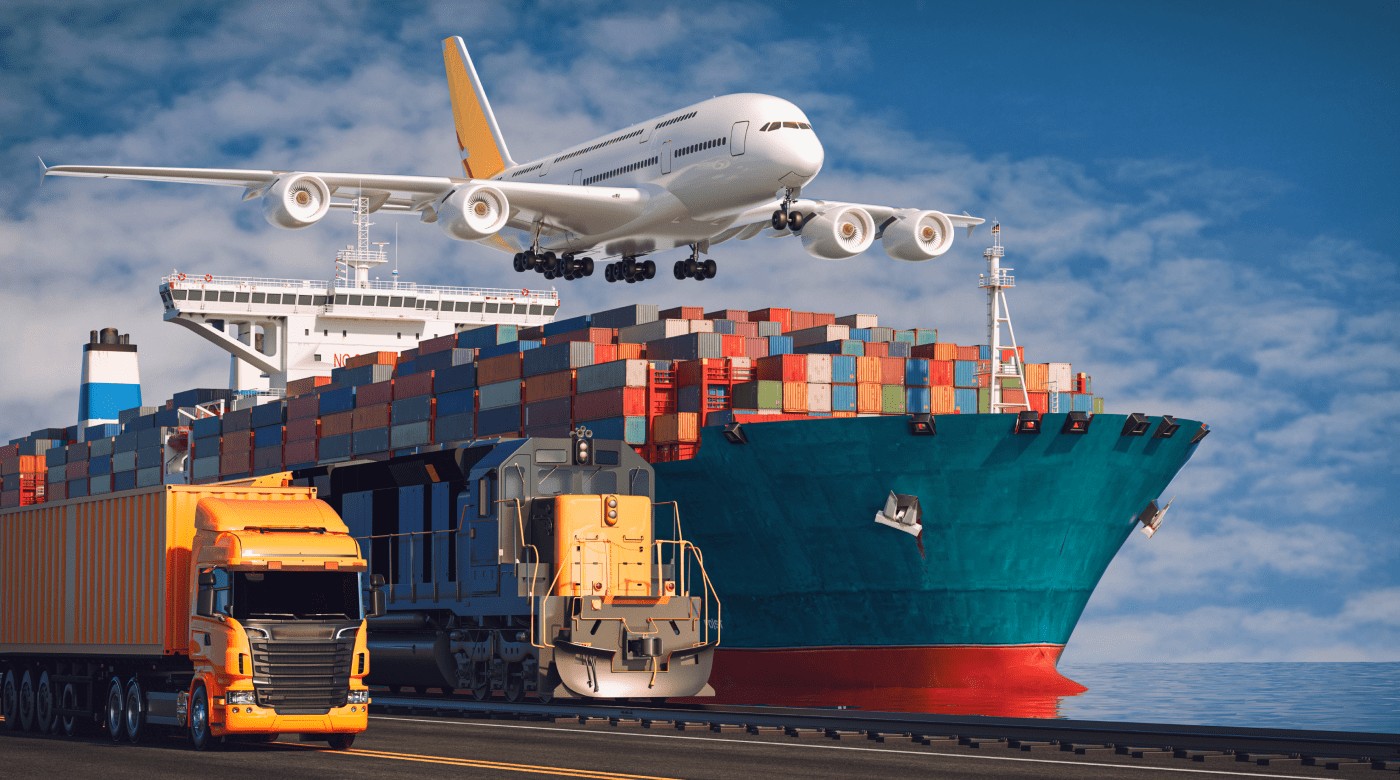It’s not easy to know where your inventory is at any given moment.
Your products could be manufactured thousands of miles away, requiring an expansive delivery operation to get them into your customers’ hands.
Plus, as your business scales, you may need to bring on multiple shipping partners via different modes of transportation.
That’s where a multimodal distribution model becomes a valuable option. Multimodal distribution enables businesses to get their products in customers’ hands more efficiently.
In this article, we’ll cover everything you need to know about a multimodal distribution model and how you can implement one.
What is multimodal distribution?
Multimodal distribution is the process of using multiple shipping modes such as land, air, sea, or rail to get your product where it needs to go.
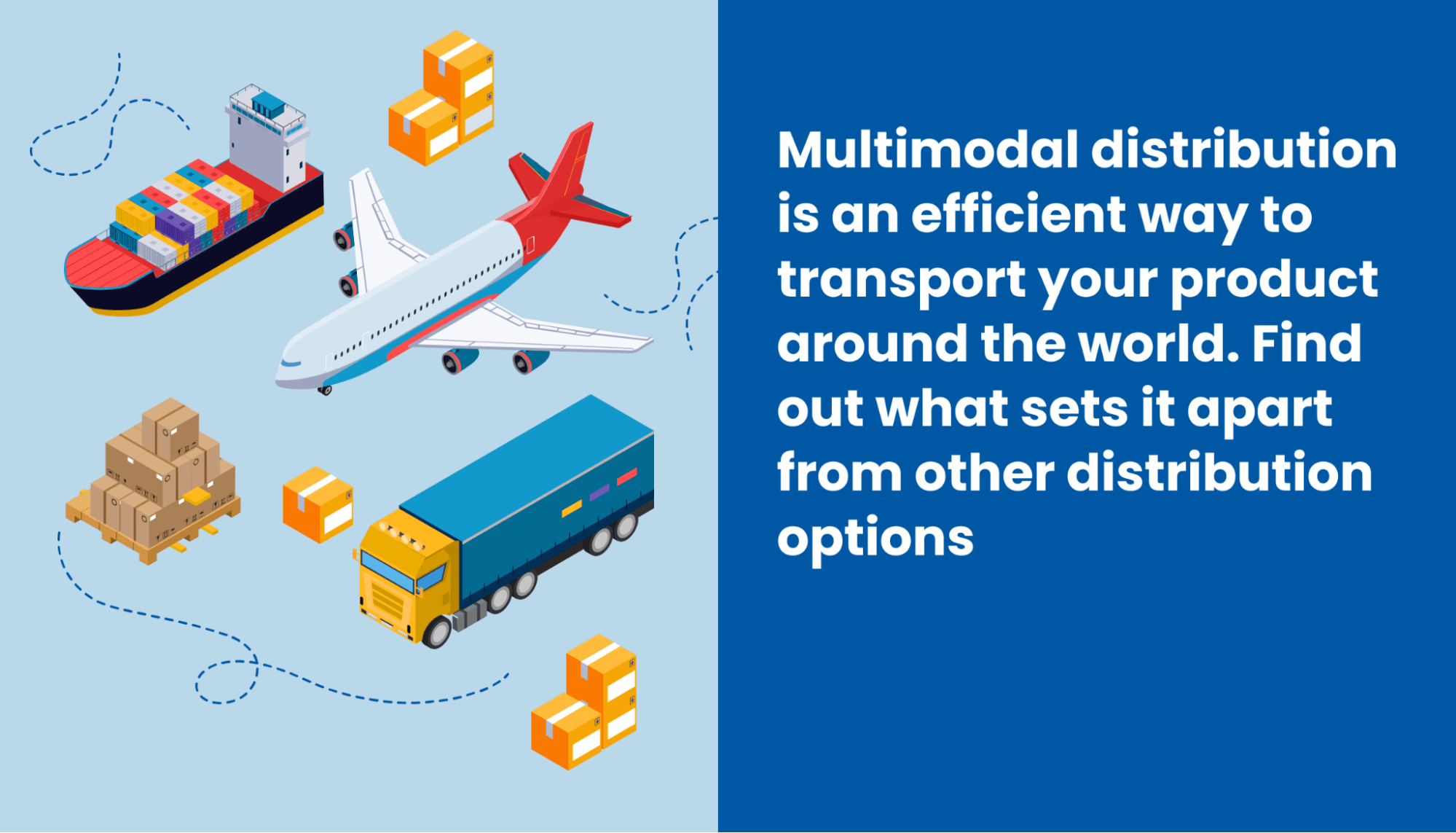
One of the main differentiators that distinguishes a multimodal distribution operation is the fact that all the carriers will be under one contract — no matter the mode of transportation.
For example, companies providing both sea and air shipping capabilities all fall under the same agreement.
Businesses often opt for multimodal distribution chains due to the many benefits the system provides to customers and businesses alike.
Plus, in many instances, businesses need to use multimodal distribution channels to move their products around the world and get them into their customers’ hands.
Multiple shipping modes may be needed across various terrains, making multimodal distribution a necessary option. By working with a variety of carriers under one contract, businesses can effectively ship their products and manage their supply chain appropriately.
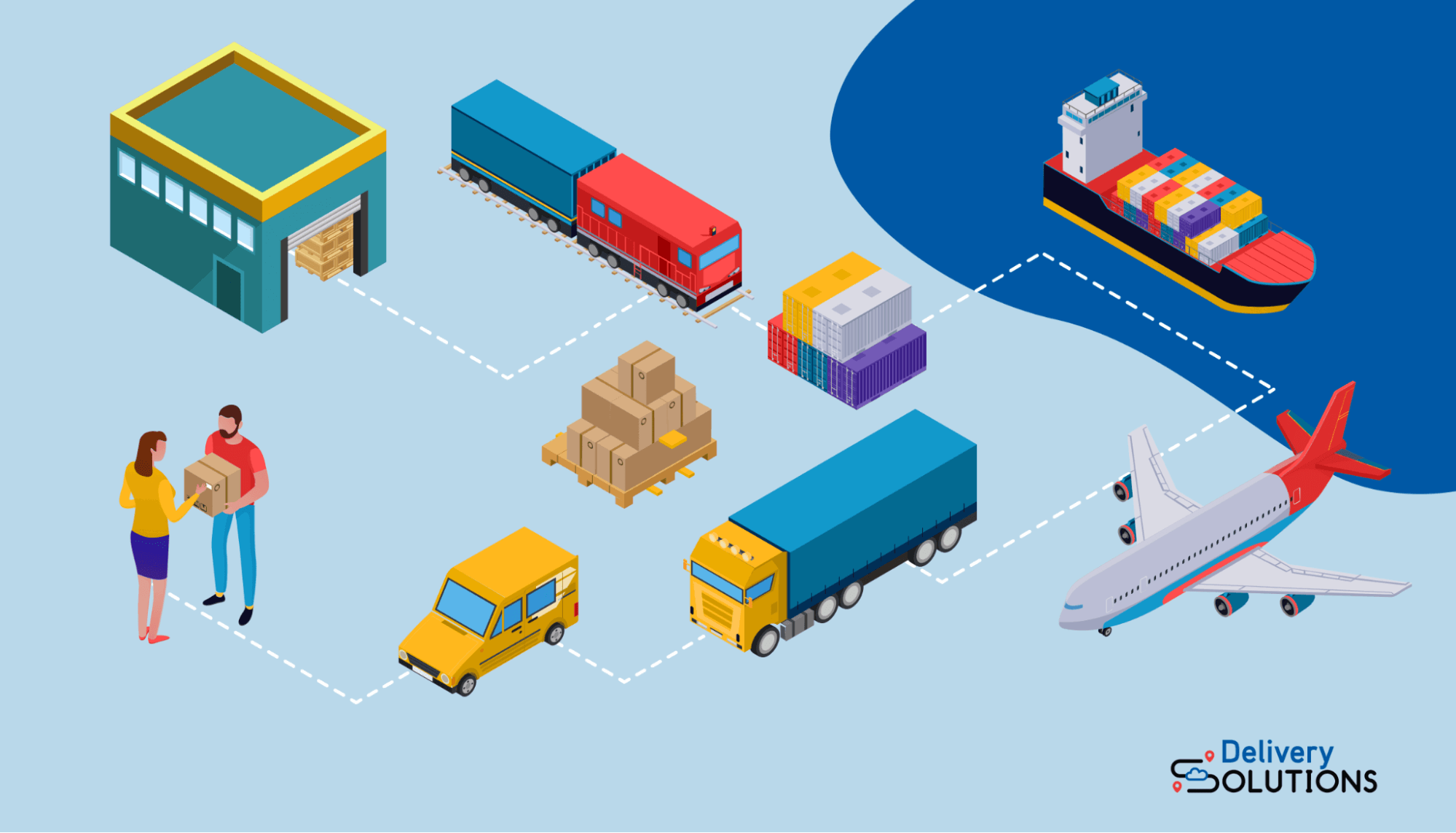
Multimodal distribution can have a quantifiable impact on business operations.
It’s tough to find another distribution strategy that improves efficiency and reduces costs at the same time. Every business is always trying to achieve this and optimizing shipping operations is one way to do it.
Those aren’t the only benefits, though. Let’s take a deeper look at why so many businesses use multimodal distribution methods.
The business benefits of multimodal distribution
There are so many ways to set up a supply chain and ship products around the world efficiently.
Why do so many businesses choose multimodal distribution?
There are a handful of reasons businesses and customers alike approve of multimodal distribution channels.
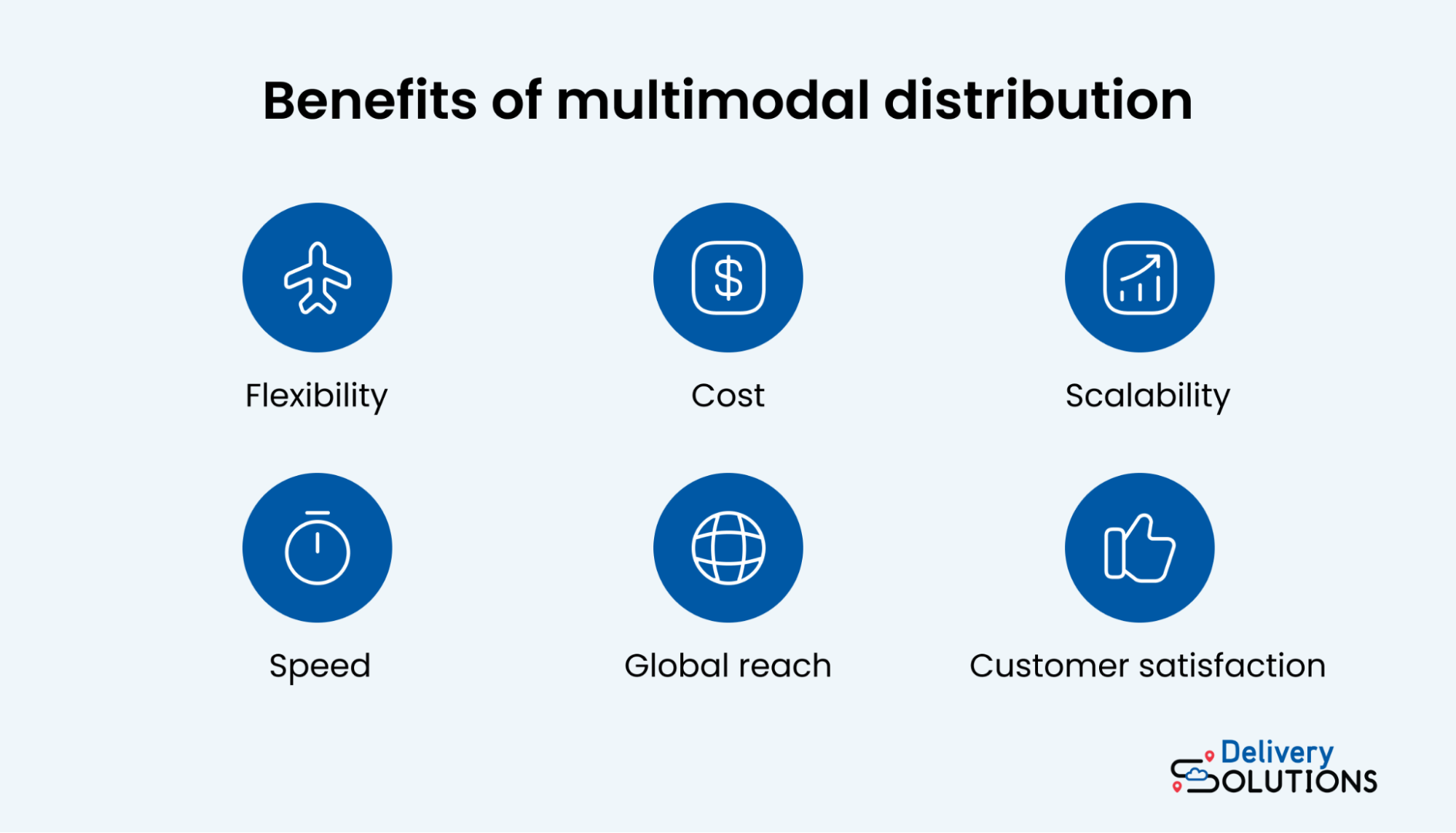
Some of the most significant benefits of multimodal distribution include:
- Flexibility: Businesses can adapt on the fly depending on market conditions. If one carrier can’t complete its leg, there are multiple other modes of transportation available to take its spot.
- Cost: Businesses will have more options to ship their products, providing them with the ability to evaluate each mode by its cost-efficiency. Plus, there are multiple modes that they can consider to get the job done safely, efficiently, and cost-effectively.
- Scalability: If one distribution channel is overloaded, a business can expand into another. Also, the business can quickly ramp up with alternative distribution channels based on market dynamics (e.g., geographic, geopolitical, and more)
- Speed: Freight can move around the world at a faster rate with multimodal shipping. You can work with a wider network of shipping options instead of relying on one mode.
- Customer Satisfaction: Businesses have multiple ways to move their products around the world, improving delivery rates and decreasing shipping delays for their customers. Also, businesses will have more visibility over their shipments when using multimodal distribution.
- Global Reach: The company can expand into international markets with sea and freight options. Ground-only delivery shipments will no longer restrict a company from doing business with a country or continent overseas.
Collectively, all of these reasons are strong arguments for why businesses should consider multimodal distribution.
But there are other shipping methods that are similar to multimodal distribution that you should also look at depending on your business’s needs.
Intermodal distribution is a similar shipping method with a few unique differences. Let’s take a look at how those two methods compare to each other.
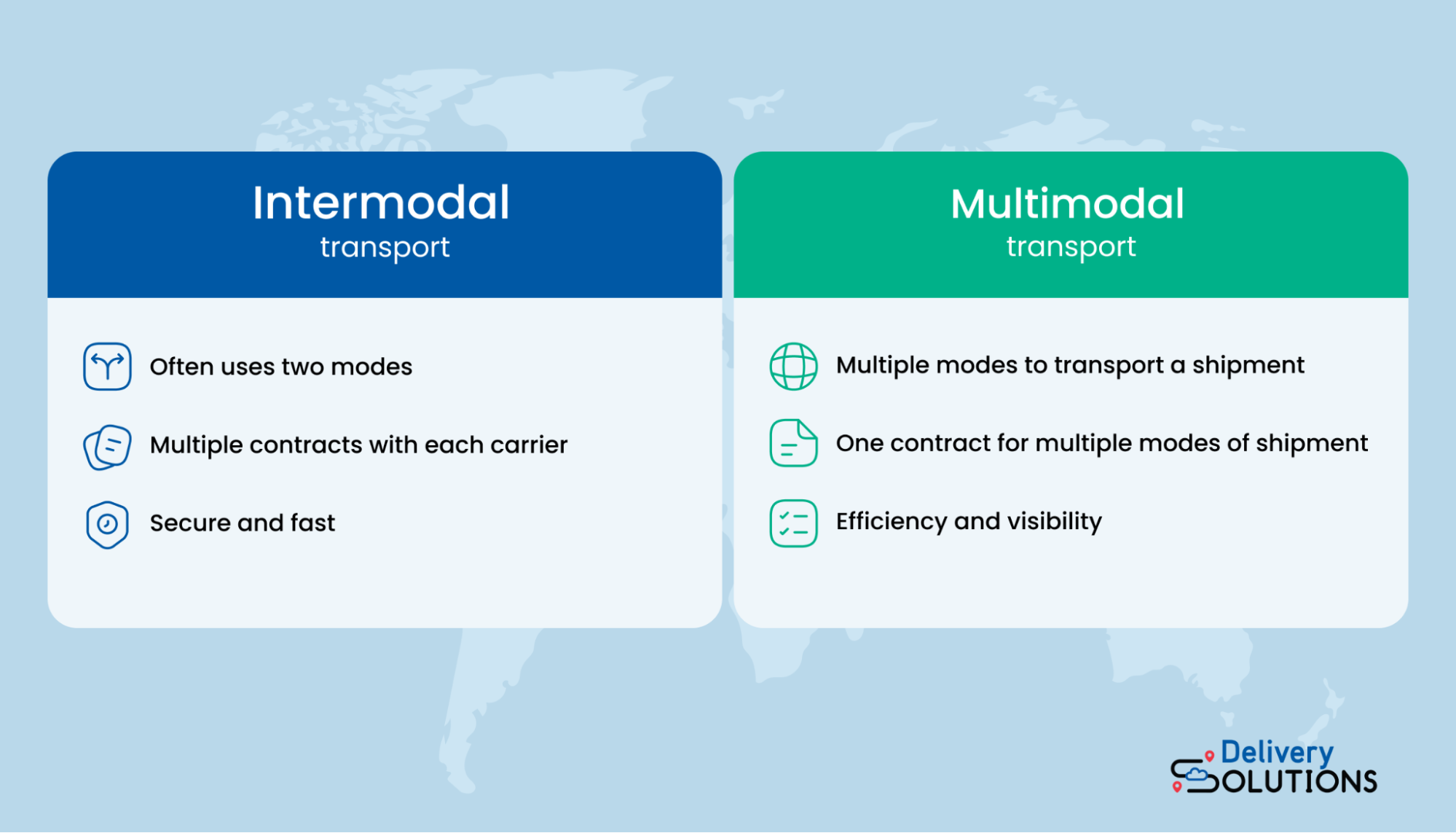
What is the difference between intermodal and multimodal distribution?
Companies use intermodal and multimodal distribution methods to ship their raw materials and products all around the world.
Although both shipping methods are very similar, they still each have their own pros and cons for deployment.
Intermodal distribution
Intermodal distribution is the deployment of freight across multiple shipping modes (including land, air, sea, and ground).
In 2021, there were over 18.43 million intermodal freight shipments around the world. This is the second largest intermodal shipment volume since 2015.
Intermodal distribution is unique because there is no handling of the freight when changing modes. The freight stays in the container and the entire container is moved as a complete unit.
Most intermodal transportation often uses two modes. Businesses operating with an intermodal transportation strategy often have multiple contracts with each carrier.
It's unlikely that they have one contract with all the different modes. Instead, they can find and negotiate the best rates with different carriers for each mode. This process can sometimes be more time-consuming for the business.
However, businesses enjoy intermodal transportation due to its security and speed. Since the freight stays in the container as it is moved, no one can tamper with it.
Also, since multiple carriers are competing for the same contract, the business has the power to select the one with the fastest shipping time.
Multimodal distribution
Multimodal transportation uses multiple modes to transport a shipment, similar to intermodal transportation.
However, the key difference is that there is typically one contract that's responsible for all the modes — even if it combines sea, ground, and air shipping.
Businesses work with conglomerates that have partnerships across multiple shipping modes and work directly with them.
In some cases, businesses will work with a registered third-party agent who'll piece together multiple contracts with different shipping partners around the world. The business would still only have one contract for their entire multimodal shipping process.
Unlike intermodal distribution, workers can take and transport the freight out of the container between different modes. This process is why multimodal distribution may be less secure than intermodal.
However, multimodal distribution often produces better efficiency and visibility than intermodal distribution. Since businesses operate off one contract, they have more efficient routes and the ability to know where their shipments are around the world at all times.
Now that you know more about what makes multimodal distribution unique, let’s take a look at how it works by reviewing an example business case.
How multimodal distribution operations work
Multimodal distribution involves a complex network of many different carriers operating across and in concert all around the world.
The easiest way to understand how multimodal distribution works is to walk through an example that could happen in life.
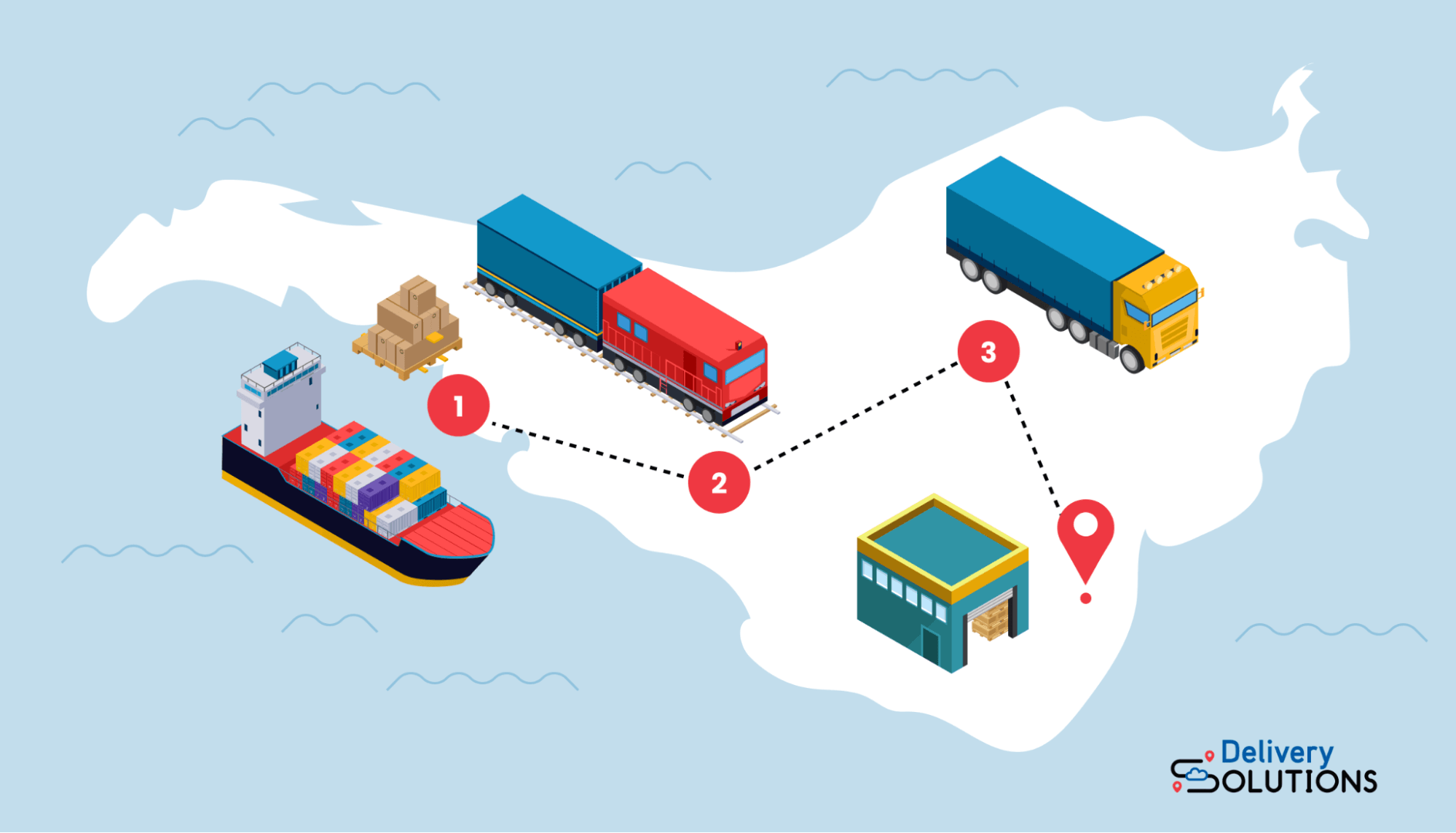
For example, a business may need to be able to distribute their product globally and reach areas that water surrounds completely.
Thus, the business would sign a multimodal distribution contract to make sure it could deliver to all parts of the globe.
The boat would transport the business’s freight, located in a container, to a country surrounded by water.
Rail could transport the freight once it arrives at the port. The rail carrier would be under the same contract as the sea carrier, making it easy for the business to keep track of their containers on the move.
Then, at the final rail checkpoint, delivery trucks may be stationed to take the container to a hub, factory, or even the end customer. That’s how multimodal distribution works.
The magic of multimodal distribution is its efficiency. Let’s say that a certain port is backed up for months due to a supply chain crisis.
With multimodal distribution, the business can work with their agent to find an alternative mode of shipping to bypass the backlog.
In that instance, it may make more sense to send freight by air to avoid that port. The business’s multimodal distribution partner may have an air carrier that can handle the load.
As more businesses turn to multimodal distribution methods, the possibilities for scalable shipping operations will continue to soar.
Conclusion
Multimodal distribution is a shipping option that businesses need to consider.
With multiple delivery modes in operation under one contract, a business will enjoy increased efficiency and visibility of its shipping process.
Plus, operators may breathe a sigh of relief knowing they only have one contract with their agent or shipping distributor.
To optimize and enhance your multimodal distribution network and make the shipping process engaging for your customers, consider working with an omni-channel experience management partner. This will connect your brand to shipping efforts in an engaging way.
Scale your omnichannel delivery strategy with Delivery Solutions’ unique last mile carrier optimization functionality. Reach out today to get started.
Ryan Caldarone
Ryan is a Sr. Digital Marketing Manager with over ten years of experience in B2B eCommerce, specializing in brand storytelling and content. Having contributed to hundreds of creative projects for SMBs and startups across the tech, energy, and fine arts sectors, Ryan brings diverse perspectives.
